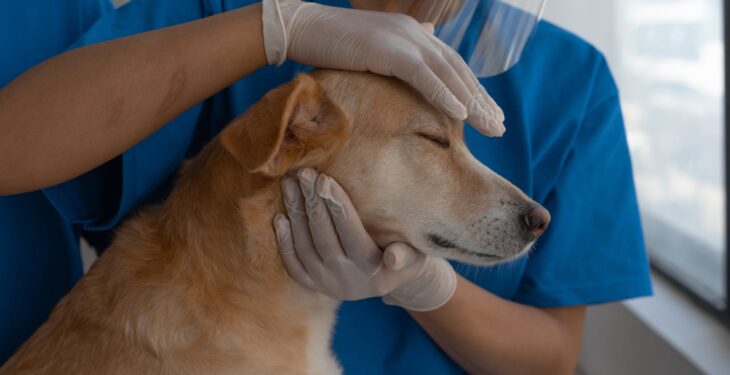Just as regular check-ups are important for our health, they are equally crucial for our pets. These visits to the vet can help prevent illnesses, detect early signs of health issues, and ensure our pets lead long, healthy lives. Let’s delve deeper into the importance of regular pet check-ups and what they entail.
The Importance of Regular Check-ups for Pets
Prevention is Better than Cure
Like humans, pets face potential health problems that are best tackled early. Regular vet appointments ensure:
- Early Detection of Potential Health Issues
- Timely Vaccination and Deworming
- Maintaining Good Dental Health
- Regular Weight Checks and Diet Advice
Monitoring Behavioral Changes
Pets can’t verbalize their feelings. Instead, they communicate through behavior. Regular health checks help identify unusual changes, such as:
- Changes in Eating and Drinking Patterns
- Signs of Stress or Discomfort
- Changes in Sleep Patterns or Activity Levels
What to Expect During a Regular Pet Check-Up
Veterinary Physical Exam
A veterinary physical examination is a thorough check-up of your pet performed by a vet, much like your own physical exam at a doctor’s office. Here are the main components of this assessment:
Checking Vital Signs
Pets’ vital signs, such as heart rate, respiratory rate, and temperature, give initial clues about their health condition. The vet will observe these parameters closely.
- Heart Rate: To gauge the functioning of the heart.
- Respiratory Rate: To determine the lung health and related systems.
- Temperature: Any increase or decrease could indicate an illness.
Thorough Examination of Pet’s Body
A comprehensive physical examination involves the vet checking your pet’s entire body. This includes:
- Check the abdomen for any swelling or discomfort.
- Examining the limbs for any tenderness or difficulty in movement.
- Palpating the lymph nodes and organs for any irregularity.
Examination of the Coat and Skin
The condition of your pet’s skin and fur can reveal much about their overall health. The vet inspects:
- The texture and quality of the fur; any changes can signify dietary inadequacies, parasites, or skin diseases.
- The skin and paw pads: looking for infections, allergies, or parasites.
Checking Eyes, Ears, and Mouth
These areas can indicate certain health issues that might need further investigation or treatment.
- Eyes: Checking for redness, discharge, or abnormalities that could indicate an eye infection or disease.
- Ears: Examining for signs of inflammation, infection, or parasites.
- Mouth: Looking at the teeth and gums for signs of dental disease and the throat for any signs of infection.
Diagnostic Services
Regular vet visits also entail potential diagnostic tests, such as:
- Blood Work and Urine Tests
- X-Rays
- Ultrasounds
Comprehensive Care for Pets
Comprehensive care for pets, like what the vets Kinston, NC, offer, ensures all-round healthcare for your pet. Regular check-ups, along with constant monitoring of their health, help maintain a pet’s quality of life and longevity.
Frequency of Regular Pet Check-ups
The ideal frequency of vet visits depends largely on the age, health conditions, and specific needs of your pet.
Frequency for Puppies and Kittens
- Puppies and kittens generally need more frequent check-ups as they require vaccinations, often called puppy shots and deworming.
- These visits are also crucial to monitor their growth and development.
Frequency for Adult Pets
- Most adult pets should ideally have an annual health check-up. However, pets with specific conditions may need more frequent monitoring.
Frequency for Senior Pets
- Senior pets often need special attention and might require more frequent visits to manage arthritis, dental health, and weight management.
Making Veterinary Visits Less Stressful for Your Pet
Regular veterinary visits are imperative for your pet’s health, but they can often be stressful for your furry friend. Here are some strategies to help ease their stress and ensure a smooth visit:
Accustom Your Pet to Travel
Travel-related anxiety can make vet visits difficult for your pet.
- Regular short drives can help acclimatize your pet to car rides.
- Ensure the ride is comfortable with a secure carrier or seat belt for the pet.
- Bring along a favorite toy or blanket to create a familiar environment.
Create a Calm Environment
Try to create a calm and soothing atmosphere for your pet before and during the visit.
- Talk to your pet in a calm and comforting voice.
- Avoid showing your anxiety, which can make your pet nervous.
- Choose a quiet, uncrowded part of the waiting room to relax.
Positive Reinforcement
Positive reinforcement goes a long way in promoting good behavior in pets.
- Reward your pet with treats or praises during and after the vet visit.
- Stressful procedures can be followed with something enjoyable for the pet, like a game or a special treat.
- Reassure your pet with comforting pets and words during the appointment.
Practice Makes Perfect
By mimicking some procedures at home, your pet can become familiar with them.
- Practice handling your pet at home, as the vet does during an examination.
- Get your pet used to being touched around the mouth, ears, and paws.
By following these measures, you can make vet visits a more positive experience for your four-legged friend, ensuring they get the preventive care they need without the stress.
Boarding for Pets
If you’re traveling or unable to provide round-the-clock care, consider services like dog boarding in Kinston, NC. This way, your pet gets professional care, regular monitoring, and immediate medical attention if needed, ensuring their well-being.
Conclusion
In a nutshell, regular vet visits are a small but crucial aspect of pet care. They allow for early detection of any potential issues, management of existing ones, and overall enhance your pet’s quality of life. So, show your furry friend how much you love them, and schedule their next check-up today.





